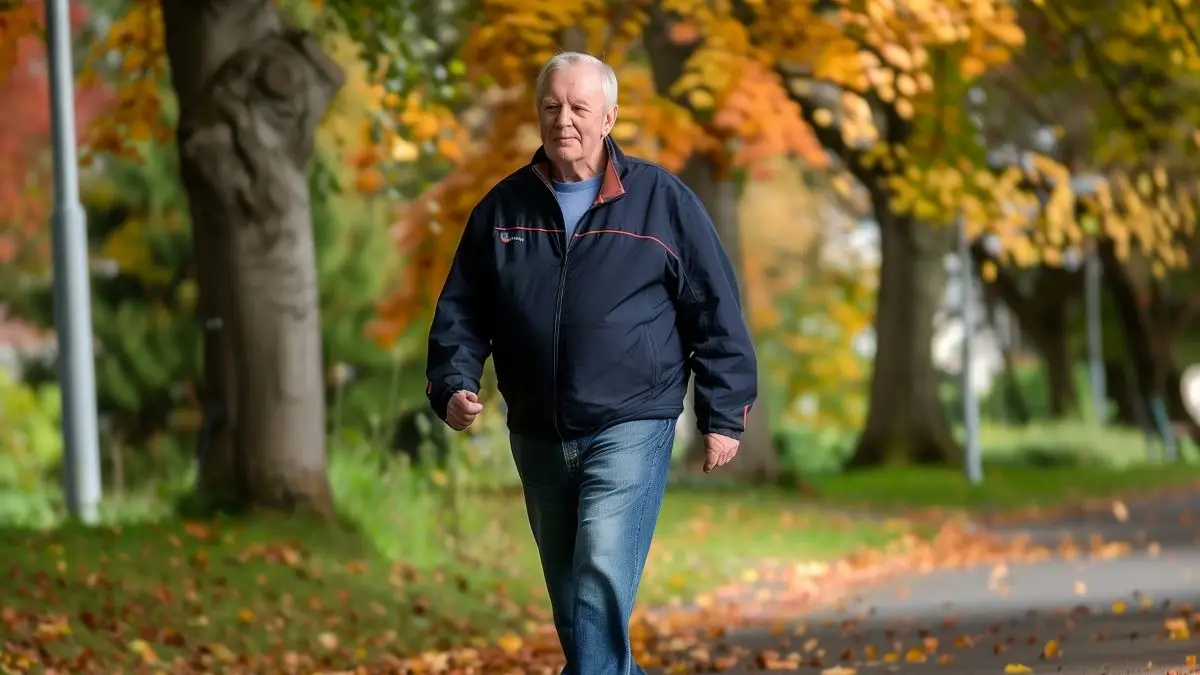For years, the fitness world has sold a simple, brutal idea: no pain, no gain. This pushed the image of the marathon runner as the peak of health, leaving many people feeling that true anti-aging exercise was out of reach.
But new science is flipping that script. The key to a longer, healthier life may not be about how hard you push, but about the specific signals you send to your cells.
This article cuts through the noise. We’ll explore the difference between just living longer and living better. We’ll also answer a critical question: could a specific type of walking be more powerful for your long-term health than running?
You’ll get a simple, science-backed plan for 2025 that turns one of your most basic movements into a powerful tool against aging.
A New Way to Think About Exercise and Aging
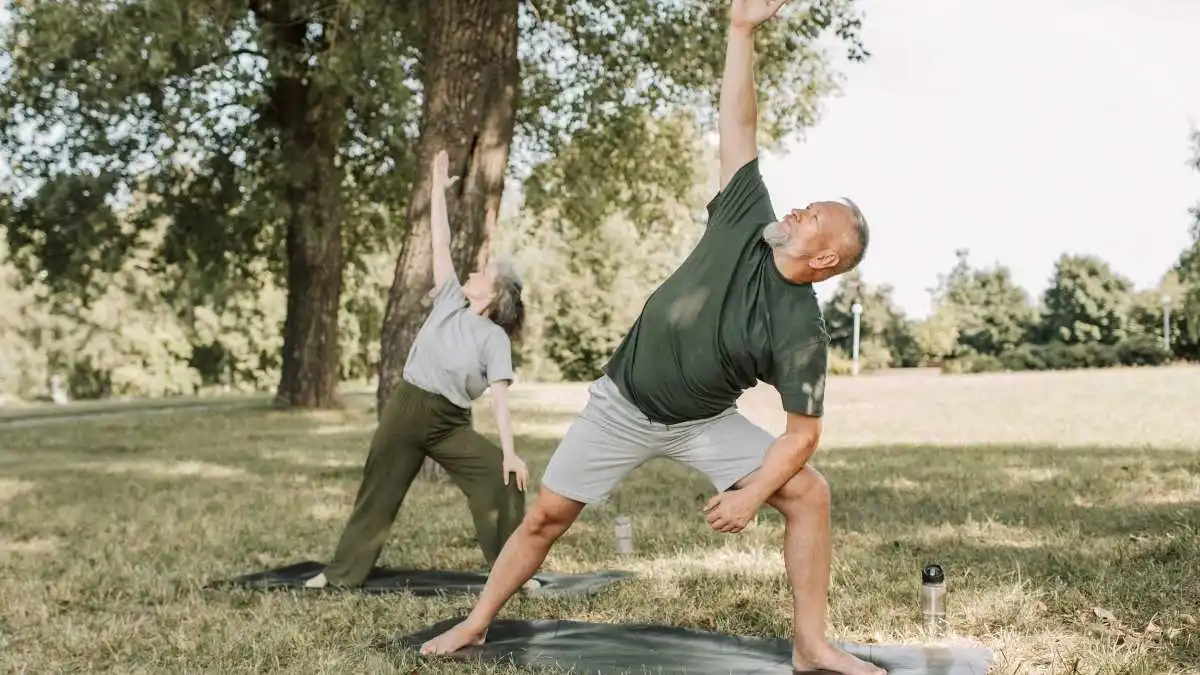
Why “No Pain, No Gain” is Old News
For a long time, people thought you had to punish your body to live longer. They pictured marathon runners and athletes pushing themselves to the limit. This idea made it seem like only super-fit people could get the real anti-aging benefits of exercise.
But new science shows this might be wrong. The key to a longer, healthier life may not be how hard you work out. It’s about sending the right signals to your cells.
This article will show you what the latest research says. We’ll look at the difference between lifespan (how many years you live) and healthspan (how many of those years you feel good). The goal isn’t just to live longer, but to live better.
We’ll answer a big question: Could a certain type of walking actually be better for you than long-distance running?
You’ll learn how movement talks to your body on a tiny, cellular level. It’s not just about steps or calories. It’s about the intensity of your movement.
The science shows that how fast you move can be more important than how long you move. We’ll show you a simple, powerful way to walk that can help slow down the aging process. You’ll get a clear, easy-to-follow fitness plan for 2025 that uses this new science.
What Are “Longevity Genes”? A Quick Guide to Your Body’s Anti-Aging Tools
How can walking be better than running? To see how, you need to know a little about what’s happening inside your cells. Your body has “longevity genes.” These are real genes and proteins that help your cells stay healthy and fix damage.
When you exercise, you’re talking to this system. Two of the most important parts of this system are telomeres and sirtuins. They are on the front lines of the fight against aging.
1. Telomeres: Your Body’s Countdown Clock
Think of the plastic tips on your shoelaces. They stop the laces from fraying. Your cells have something similar called telomeres. They are tiny caps on the ends of your chromosomes that protect your DNA.
Every time a cell divides, these caps get a little shorter. Over your life, they wear down. When they get too short, the cell stops dividing and gets old. This is a basic part of aging.
The length of your telomeres is a good sign of your “biological age,” which can be different from your actual age in years. Shorter telomeres are linked to a higher risk of age-related problems like heart disease. Things like stress and inflammation can make them shorten faster. But if you can protect your telomeres, you can help slow down aging inside your body.
2. Sirtuins: The Guardians of Your Cells
If telomeres are the clock, sirtuins are the workers who keep the clock running well. Sirtuins are a group of proteins that act like a special forces unit for your cells. They turn on when your body is under good stress, like from exercise.
Their main job is to help control the health of your cells. Two of them, SIRT1 and SIRT3, really respond to exercise. When you work out, your cells need more energy. This gives sirtuins the fuel they need to get to work.
Once they’re active, sirtuins do a few key things. They help build new, better powerhouses for your cells (called mitochondria).
They fight off damage from stress. And they help repair your DNA. Sirtuins are the guardians of your cells. Turning them on with exercise is a great way to make your cells stronger and last longer.
These two systems work together. The same things that damage your telomeres—stress and inflammation—are what sirtuins fight against.
So, if you do an exercise that fires up your sirtuins, you also create a safer place for your telomeres. This helps slow down the aging clock. The best exercise for a long life is one that turns on this whole defense network.
Walking vs. Running: What Does the Science Say?
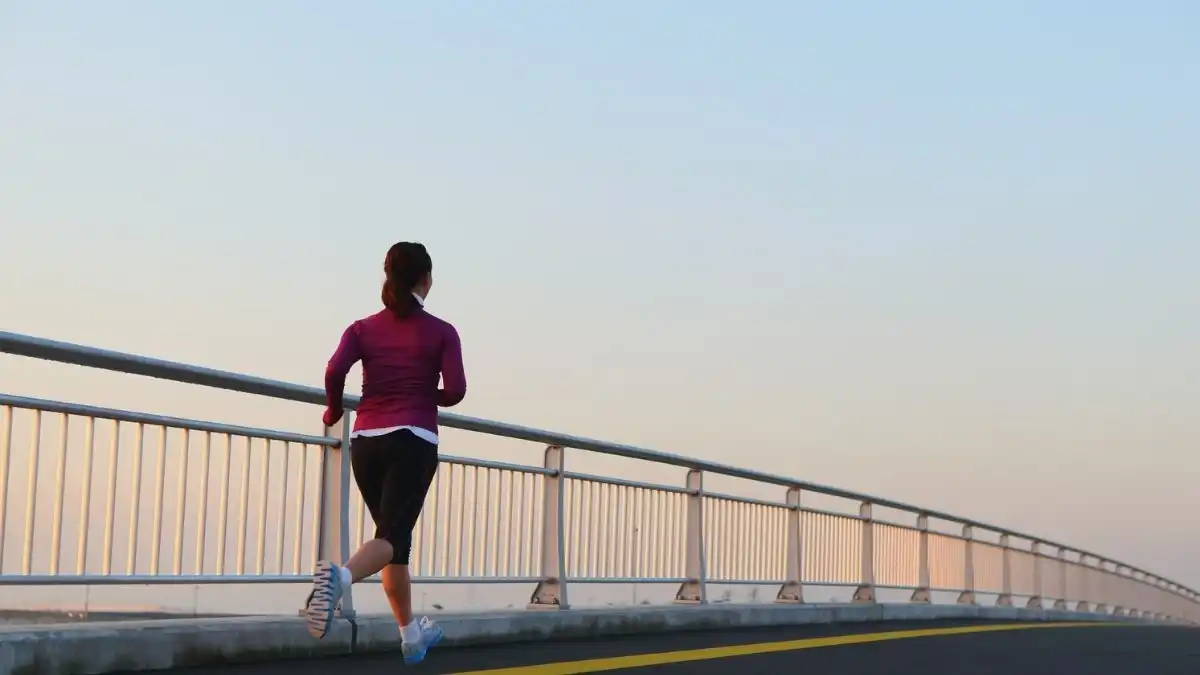
Before we get to the best type of walking, let’s look at what we know about both walking and running. For years, they’ve been the top two choices for simple cardio exercise. Each has its fans and its benefits. Seeing their strengths and weaknesses helps show why a small change in how you walk can make a huge difference.
Why People Love Running
The case for running is strong. It’s built on getting big results from intense work. Its main benefit is that it’s fast. One major study found that running for just 5 to 10 minutes a day led to a 30% lower risk of death from any cause. That’s a huge return for a small amount of time.
Running is also great at improving your cardiovascular fitness, which is a good predictor of a long life. The high-impact nature of running helps build strong bones, which is important for staying mobile as you get older.
Most importantly, studies have linked running to longer telomeres. One large study found that people who ran for at least 75 minutes a week had much longer telomeres than people who didn’t exercise.
Another study suggested that active people, who ran about 30 to 40 minutes five times a week, had a biological age that was nine years younger than inactive people. This makes running look like a powerful anti-aging tool.
The Hidden Power of Walking
Running gets a lot of attention, but walking is a true champion for a long life. Its biggest strengths are that almost anyone can do it, it has a low risk of injury, and it works for all kinds of people. A big 2021 study showed that the benefits of walking start early. Taking just 4,000 steps a day lowers your risk of death from any cause. The benefits keep growing up to around 10,000 steps.
A regular walking habit helps lower your risk for the most common diseases of aging, like heart disease, stroke, and type 2 diabetes. It also helps keep your brain sharp.
The best proof of walking’s power comes from “Blue Zones.” These are places in the world where people live very long, healthy lives. A common thing they share is not intense gym workouts, but a life full of natural movement.
They walk everywhere, often on hills. They garden and do physical work into their 80s and 90s. This shows that a life built on walking is a proven way to live longer and healthier.
What if You Burn the Same Amount of Energy?
People often think running is better because it’s more intense. But a 30-minute run burns a lot more energy than a 30-minute walk. What if you compare them based on the total energy used?
Some big studies have looked at this. They found that when you match the energy burned, walking and running give you very similar health benefits.
Both activities lowered the risk of death from all causes, heart disease, and diabetes by about the same amount. Another study found that both walkers and joggers improved their cardio fitness by the same amount when they worked out at a similar effort level.
This is a big deal. It changes the whole debate. The question isn’t “Is walking or running better?” It’s “How can you get the right amount of work to turn on your longevity benefits?”
This opens up a new idea. If you can change how you walk to get the same benefits as running, you could have the best of both worlds: great results with a much lower risk of injury.
To make this clear, here’s a simple table comparing different types of exercise.
Table 1: How Different Exercises Stack Up for Longevity
| Metric | Slow / Moderate Walking | Brisk / Interval Walking | Running / Jogging |
| Main Cell Benefit | Lowers risk for many diseases, good for overall health. | Directly linked to longer telomeres and turns on sirtuins. | Greatly improves cardio fitness, linked to longer telomeres. |
| Lower Risk of Death | Good, starts at just 4,000 steps a day. | Very high, linked to how fast you walk. | High, 30% lower risk from just 5-10 minutes a day. |
| Cardio Fitness Boost | Small. | Medium to High, especially with intervals. | Very High. |
| Bone Density Boost | Very little. | Medium, because you hit the ground a bit harder. | High, because it’s a high-impact activity. |
| Injury Risk | Very Low. | Low, much lower than running. | Medium to High, especially for your joints. |
| Easy to Stick With? | Very High, good for almost everyone. | High, you can adjust it to your fitness level. | Medium, can be hard for some people. |
| Time Needed for Benefit | 30-60 minutes a day is often recommended. | 20-30 minutes a day for a good interval workout. | 5-10 minutes a day gives a big benefit. |
This table shows the trade-offs. Running is very efficient but has a higher injury risk. Slow walking is very safe but might not be as powerful for your cells. Brisk and interval walking looks like a great middle option. It seems to give you the big cell benefits of intense exercise while still being safe and easy on your body.
The Big Discovery: How a Certain Type of Walking Changes Everything
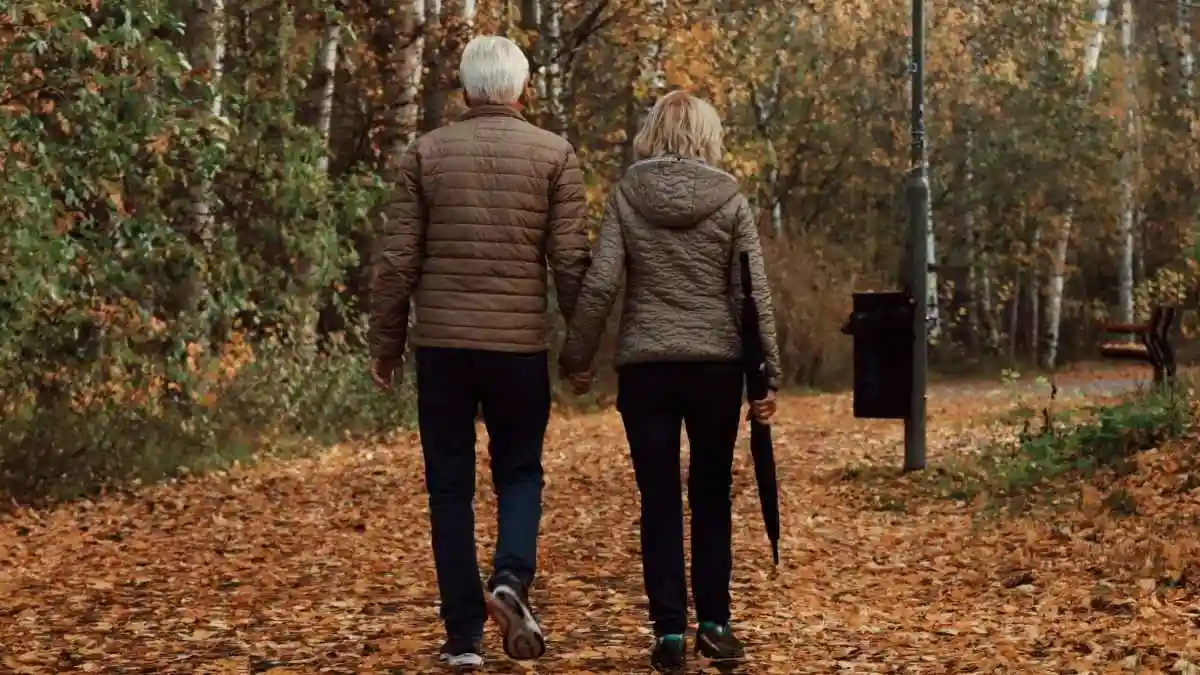
The science so far shows one key thing: your body responds to the work you give it. This leads to the main point of this article. The big discovery is that for walking, how fast you walk matters much more for your health than how much you walk.
Your pace is a more powerful tool for a long life than your total steps or minutes. This idea turns walking from a simple activity into a real anti-aging tool.
It’s About Pace, Not Just Steps
A huge study from the University of Leicester is the key piece of evidence. They looked at genetic data from over 400,000 adults. They asked people if they walked at a “slow,” “steady,” or “brisk” pace.
The results were clear: a faster walking pace was linked to longer telomeres, the marker of a younger biological age.
This link was true even after they accounted for how much total exercise people did. This means a person who walks fast for 30 minutes could get more anti-aging benefits than someone who walks slowly for an hour, even if the slow walker takes more steps.
This isn’t the only study to find this. Other data shows that brisk walkers can have a life expectancy up to 20 years longer than slow walkers. Another study found that just 15 minutes of fast walking a day was linked to a nearly 20% lower risk of death.
Even short, one-to-two-minute bursts of fast walking or stair climbing are linked to a lower risk of cancer. All this evidence points to one thing: when it comes to walking for a long life, you should focus on your speed.
Proof: Fast Walking Causes You to Age Slower
A link between two things doesn’t prove that one causes the other. Maybe healthy people with long telomeres just find it easier to walk fast. But the scientists in the Leicester study used a smart genetic trick to figure this out.
It’s called Mendelian randomization. In short, it uses the genetic lottery to act like a perfect scientific study. Some people have genes that make it easier for them to walk faster. Since these genes are random, they aren’t affected by lifestyle choices. By looking at these genes, the scientists could see if a faster pace causes longer telomeres.
The results were clear. The evidence showed that walking faster causes telomeres to be longer. It did not show that having longer telomeres makes you walk faster. This is the key piece of the puzzle.
It means that brisk walking isn’t just something healthy people do. It is something that directly makes you healthier at a cellular level. This is what led to the study’s amazing estimate: a lifetime of brisk walking could make you the equivalent of 16 years younger by middle age.
The scientists say to be careful with this number—it’s a big statistical finding, and your personal results might be different. But it shows just how powerful picking up your walking pace can be.
Interval Walking Training (IWT): The Best Anti-Aging Plan
The science is clear: you need to walk with intensity. But what’s the best way to do that in real life? The answer is a method called Interval Walking Training (IWT). It’s a perfect match for the science of a long, healthy life.
What is IWT?
Interval Walking Training, sometimes called the “Japanese walking” method, is a simple workout plan. It’s a type of High-Intensity Interval Training (HIIT) but for walking, so many more people can do it.
The idea is simple. Instead of walking at the same speed the whole time, you switch between short bursts of very fast walking and periods of slow, easy recovery walking. Studies show this method can give you bigger health benefits than walking at a steady pace for the same amount of time.
How IWT Helps Your Cells
The fast/slow cycle of IWT is designed to give your body the perfect signal to fight aging. The short bursts of fast walking create a good kind of stress that turns on your sirtuins, the guardians of your cells. This tells your cells to get stronger, repair damage, and make more energy.
These fast periods also create an “afterburn effect.” Your body keeps burning extra calories even after you’re done working out. This makes IWT a very efficient workout.
Most importantly, the fast parts of IWT are exactly what the science says protects your telomeres. By adding these bursts of speed, you are directly targeting the main anti-aging benefit of walking. This method seems to hit a sweet spot.
Some research suggests that too much extreme exercise, like constant marathon training, might actually shorten telomeres. IWT avoids this problem. It gives you the intense signal your body needs to get stronger, but the recovery periods let your cells rest and adapt. This may be the best way to exercise for a long and healthy life.
Your Action Plan for a Longer, Healthier Life in 2025
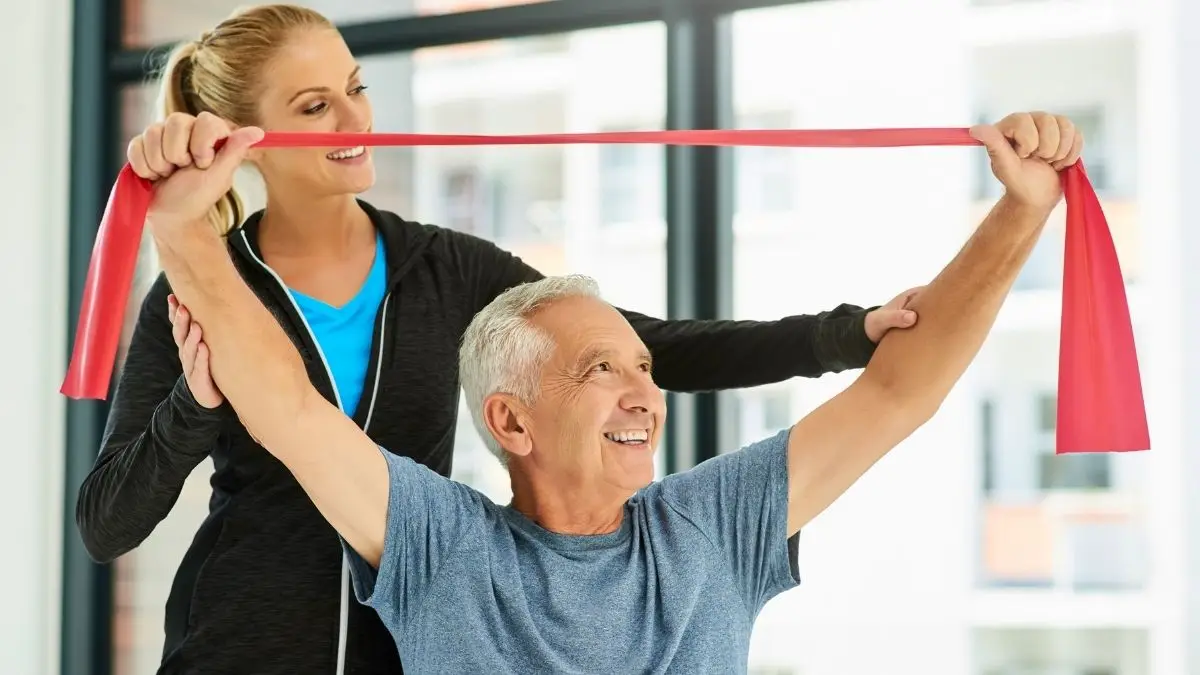
Knowing the science is the first step. Using it is what makes a difference. This last part turns all the science into a clear, simple plan you can start today. The goal is to give you a real workout plan that uses the power of walking fast to help you live a longer, healthier life.
How to Set Up Your Weekly IWT Plan
The main part of this plan is doing Interval Walking Training (IWT) a few times a week. This plan is based on the one developed by Japanese researchers. It’s safe, it works, and you can change it to fit your fitness level.
Your Main IWT Workout (About 30 minutes total):
Warm-up (5 minutes): Start with five minutes of slow, easy walking. This gets your blood flowing and your muscles ready.
Intervals (20-30 minutes): This is the main part of the workout. You’ll switch between fast walking and slow walking. A good cycle to start with is:
3 minutes of Fast Walking: Pick up your pace to a high-intensity level.
3 minutes of Slow Walking: Slow down to a comfortable, easy pace.
Repeat this 3-minute-fast, 3-minute-slow cycle five times.
Cool-down (5 minutes): End with five minutes of slow walking. You can also do some light stretches for your legs. This helps your body cool down slowly.
How to Know if You’re Going Fast Enough:
The key to IWT is getting the right intensity during the fast parts. The easiest way to check this is with the “talk test”:
Fast Parts (Challenging): This should feel hard. Your breathing should be deep and fast. It should be hard to have a conversation. You should only be able to say a few words at a time. Try to take longer steps and swing your arms to help you move faster.
Slow Parts (Easy): This should be a relaxed pace. Your breathing should slow down, and you should be able to talk easily.
How Often to Do It and How to Improve:
How Often: Try to do three to four IWT workouts a week. Do them on different days so your body has time to recover.
How to Improve: As you get fitter, you can make the workout harder. Only change one thing at a time. Each month, you could:
Add more cycles: Go from five cycles to six or seven.
Make the fast parts longer: Try 4 minutes of fast walking and 3 minutes of slow walking.
Go faster: Push yourself a little harder during the fast parts.
Plans for Different Fitness Levels:
Beginner: Start with just three cycles instead of five. You can also make the slow part longer, like 4 minutes.
Intermediate: Follow the main plan with five cycles.
Advanced: Try seven cycles, or a harder mix like 4 minutes fast and 2 minutes slow.
More Than Just IWT: A Full Anti-Aging Fitness Plan
IWT is a great tool, but no single exercise can do everything. The best way to live a long, healthy life is to have a mix of different types of exercise.
IWT should be your main cardio workout, but you should add other things to build a strong, healthy body for life. Here’s what a good week could look like:
Fast Cardio (Your Main Workout): 3-4 IWT sessions per week. This will be your main tool for protecting your telomeres and turning on your sirtuins.
Strength Training: 2 sessions per week. This is a must-do. Lifting weights or doing bodyweight exercises helps you keep your muscle as you age. This keeps your metabolism high and helps you stay independent. Focus on big exercises like squats, lunges, and push-ups.
Slower Cardio: 1-2 sessions per week. This is for longer, easier workouts (45-60 minutes). You could go for a steady walk, a light jog, or a bike ride. This helps build your overall fitness and helps you recover from your harder workouts.
Flexibility and Balance: A little bit every day. Do things like stretching or yoga. This keeps your joints healthy, prevents injuries, and helps with balance, which is very important as you get older.
This mix of exercises works together. Strength training builds the strong muscles you need to do IWT safely. And IWT can make all your daily movements feel easier and more efficient. It’s a cycle where everything helps everything else.
The Takeaway: Don’t Just Walk—Walk with a Purpose

After looking at all the science, the main idea is simple but powerful. All movement is good for you. But the quality and intensity of your movement are what really matter for a long and healthy life.
The old debate about walking versus running is over. The real key to turning on your body’s anti-aging systems is purposeful, intense effort.
The discovery that a faster walking pace can lead to a younger biological age changes everything. It makes the goal of a long, healthy life available to almost everyone, not just elite athletes.
Interval Walking Training is a science-backed, easy, and safe way to improve your health. You don’t need a gym or special gear. It’s low-impact, but it sends a powerful signal to your cells to fight aging.
The final message is a call to action. It’s time to rethink one of our most basic movements. Turn your daily walk into a powerful tool for a longer, healthier life. Stop just counting your steps and start making your steps count.
When you walk with purpose, you’re not just getting from one place to another. You’re adding more life to your years.

